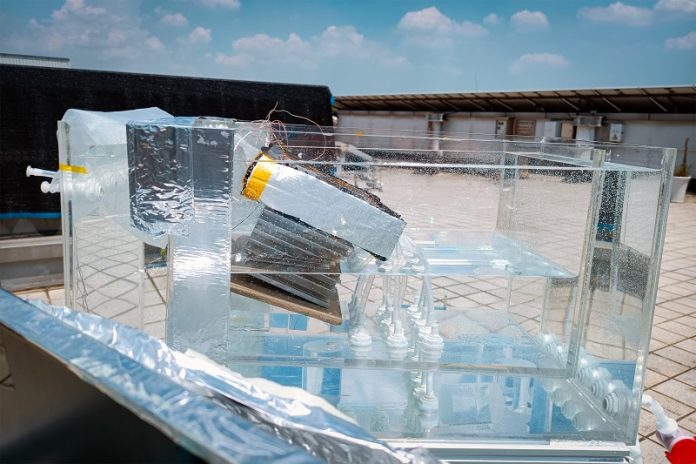
Scientists and engineers at MIT, along with collaborators in China, have created an innovative device powered by the sun, capable of turning seawater into clean, drinkable water.
This device is revolutionary as it is completely passive, requiring no external energy, and potentially produces water that is even cheaper than tap water, providing a cost-effective solution for water scarcity globally.
The design of this solar desalination system is simple yet ingenious. It uses natural sunlight to heat saltwater.
The device mimics the ocean’s “thermohaline” circulation on a smaller scale, creating swirling movements of water. This unique approach helps in the evaporation of water, leaving the salt behind.
The water vapor is then collected, condensed, and is ready to drink, while the salt continues to flow out of the system, preventing clogging.
The new design has shown remarkable efficiency, having a higher water-production and salt-rejection rate compared to existing passive solar desalination concepts.
It’s speculated that a device the size of a small suitcase could produce around 4–6 liters of freshwater every hour, functioning efficiently for several years before needing any replacements.
Lenan Zhang, a scientist at MIT, expressed excitement over the system’s potential, saying, “For the first time, it is possible for water, produced by sunlight, to be even cheaper than tap water.”
The team imagines a future where such a device could meet the water needs of a small family or even support off-grid coastal communities where seawater is abundant.
The device’s core is a single stage, resembling a thin box, fitted with a material that absorbs sunlight efficiently. The box is divided into two sections; the top section allows water flow and has an evaporator layer that uses sunlight to heat and evaporate water.
This vapor is then funneled to the bottom half where it’s cooled and converted into drinkable liquid, leaving the salt behind.
The entire system is set at a tilt in a larger container, and a tube is connected from the top section of the box to the bottom of the container, submerged in saltwater.
This arrangement allows water to push up naturally through the tube into the box, where the tilt and the sun’s thermal energy induce a swirling flow, helping in efficient evaporation and preventing salt from settling and blocking the system.
The team tested prototypes with varying stages in waters of different salinity levels, including natural seawater.
The results were promising; a scaled-up version of each stage could produce up to 5 liters of drinking water per hour, operating efficiently for several years without the need for electricity, making the overall cost of running the system cheaper than producing tap water in the U.S.
This invention is not just a leap in solar desalination technology, but a beacon of hope for addressing real-world water scarcity problems.
It opens doors to a future where clean, drinkable water is affordable and accessible to all, powered by the limitless energy of the sun.
This sun-powered desalination system is a ray of hope for water-scarce regions and could be the key to addressing global water crisis issues, paving the way for sustainable and equitable access to water in every corner of the world.
Follow us on Twitter for more articles about this topic.
Source: MIT.



